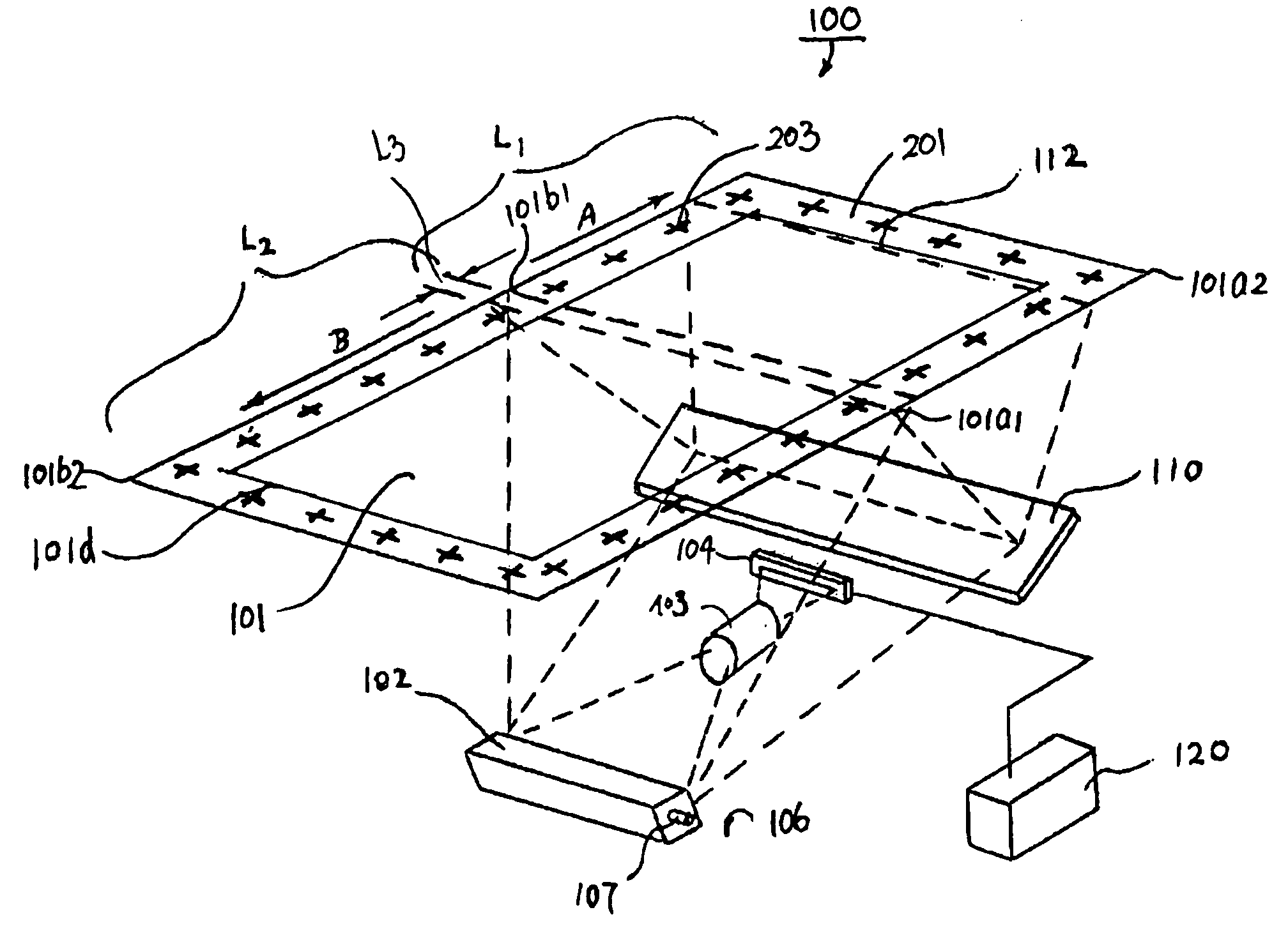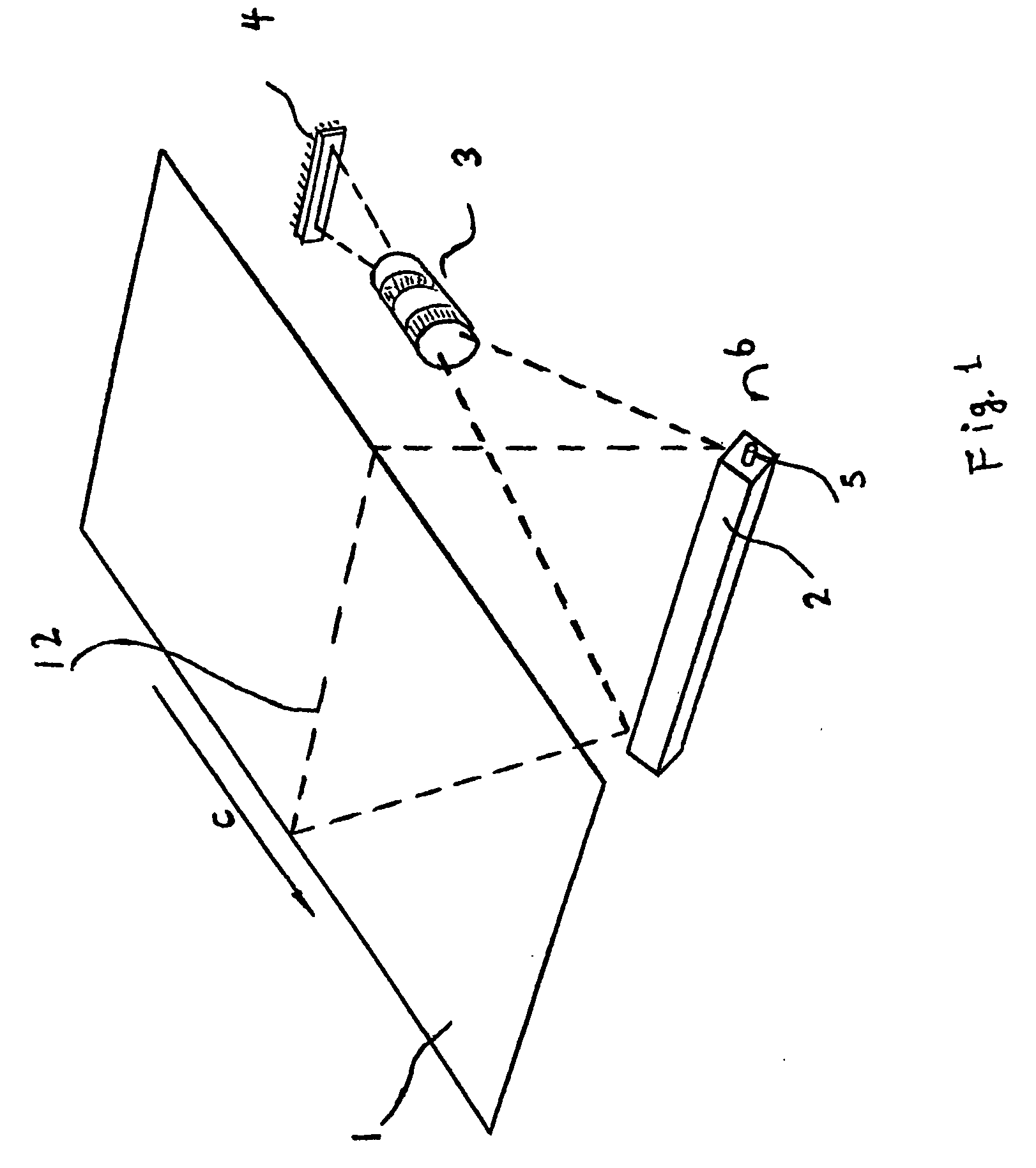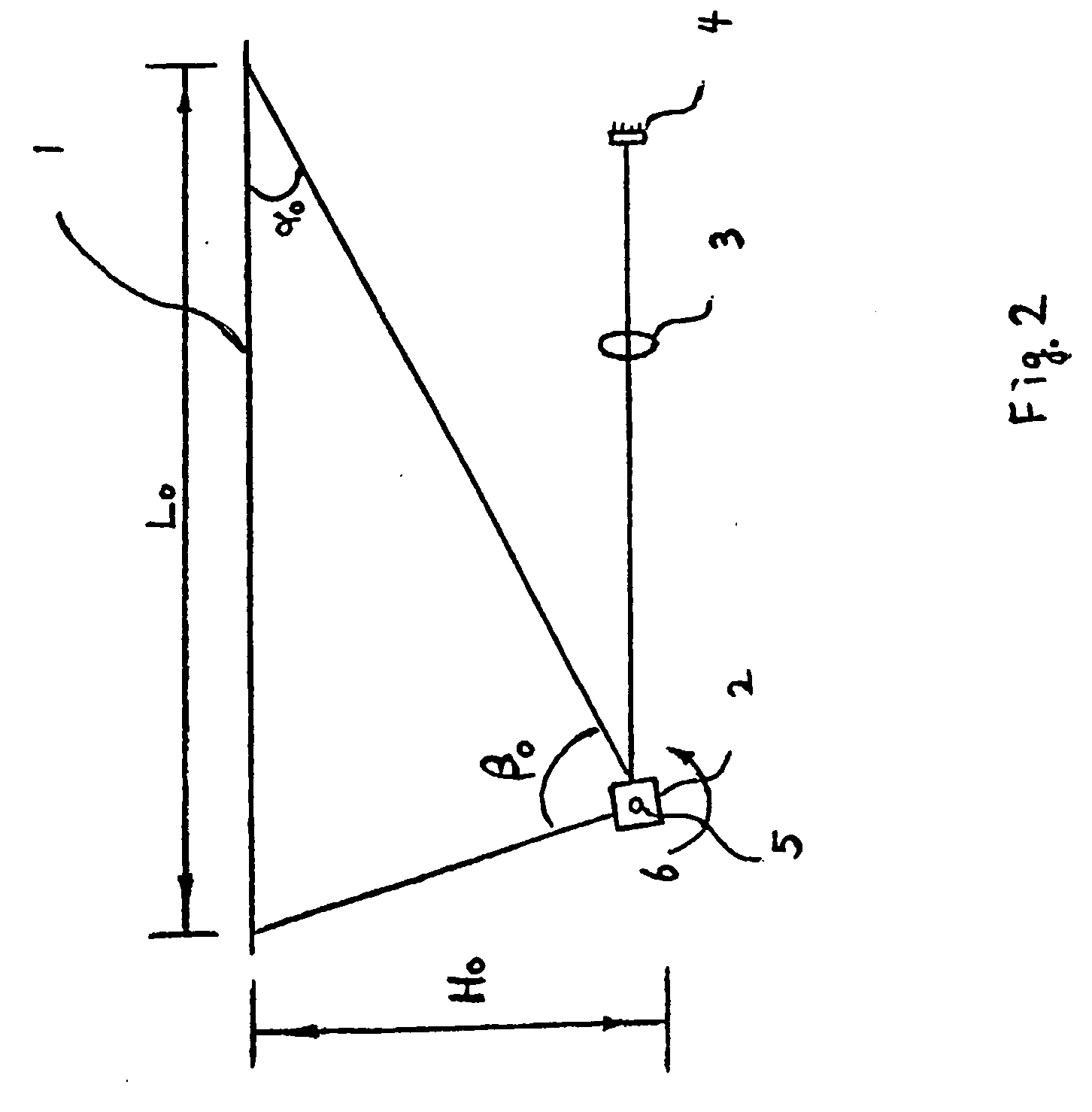Although these paper documents are good candidates for electronic storage, because they vary significantly in sizes and shapes, often folded and stapled in some way, there is a lack of efficient means for scanning these documents into a computer
system due to the speed limitation.
Factors limiting the scan speed of the flatbed devices are, among other things, the
moving speed of the scan head,
line scan rate of optical sensor, data transferring speed, and
image processing speed.
The speed
bottleneck for the flatbed devices is the slow moving scan head.
More specifically, it is not that the stepping motor cannot drive the scan head fast enough, it is the back and forth movement of the scan head and the start-stop action that limit the
moving speed of the scan head.
Therefore, despite orders of magnitude increase in
microprocessor speed and memory density in recent years, the increase in flatbed scan speed of the flatbed scanners has been incremental.
However,
video camera employing area sensors usually do not have enough resolutions to replace an ordinary office
scanner.
Similar to the glass-top scanning devices, the flashing light emitting out of the scan area during scanning may discomfort and harm users and the device has limited scan area while the height of the device is high, due to the need for keeping sufficient distance between the to be scanned document and the area sensor.
However, using
line scan cameras for document scanning is inconvenient, for example, the document to be scanned usually needs to be faced up.
In addition, the
line scan camera devices require strong scan lighting, which is uncomfortable for human eyes during frequent image capturing.
But there are issues to be resolved before rotary mirror scanners become a popular product for routine use.
One critic issue is that a certain distance is required between line sensors and the scan area. FIGS. 1 and 2 show a scanner utilizing a
line sensor and a rotary mirror.
However, this type of scanner has bulky construction and several other problems.
However, the shortening of the distance achieved by using different lenses is limited and further complicated by side effects of increasing
distortion of image captured.
This design has several problems.
Image capturing device such as a
digital camera employing pricy area sensors that generally do not have sufficient resolution to replace the ordinary office scanners.
The design also requires the document be placed facing up and camera facing down, occupies a relatively large space, is therefore not as convenient as flatbed scanners for frequent scanning.
The proposed method to combine the two partial images is based on the captured images, which are unreliable in achieving a high-quality combined image.
The
image processing, however, is quite complex and the quality of alignments of partial images varies from scan to scan.
As a result, the approach does not provide means for quickly and reliably combining partial images into one.
Another issue in designing rotary mirror scanner is to accurately time the coordination between image
processing and angular position of the rotary mirror.
However, timing main scanning cycles is difficult to implement if multiple partial images of the same original document need to be taken before they are combined into one complete image.
Additionally, cycle counting errors may be accumulated.
This method has the obvious drawback that extra components are needed.
The third method of using an
optical path length finder is also not desirable for the same reason.
The third issue in the design of a rotary mirror scanner is the correction of uneven shading of the image caused by uneven lighting
exposure.
However, in rotary mirror scanner design, the shading unevenness across the scan area would be greater than that in normal flatbed scanners.
The fourth issue in the design of an image scanner is the
elimination of distortions in the raw image initially taken by sensors.
Still another issue is the strong light emitting out of the scan area during scanning.
No solution so far has been provided to implement the second method.
Therefore, a heretofore unaddressed need exists in the art to address the aforementioned deficiencies and inadequacies.
 Login to View More
Login to View More  Login to View More
Login to View More 


